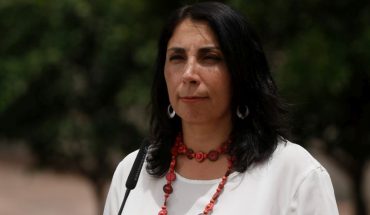Regarding the tax discussions and President Boric’s 2023 Budget, which aims to increase public spending between 4% and 5%, it is crucial to pay attention to the design of the allocation of resources for government programs, since the latest report of the Directorate of Budgets (Dipres) left much to be desired in terms of the performance of these programs.
On September 13, Dipres published its report of Evaluations of Government Programs (EPG) for the first half of 2022, where it assigns one of four notes to the performance of the programs administered by the government: good, medium, low and bad. The report details 8 programs that were evaluated between 2018 and 2021. Of the 8, only 1 was rated with good performance, which corresponds to the Legal Assistance Corporations; another was rated with average performance; and the remaining 6 are divided between low and poor performance.
But these disappointing ratings are nothing new. Every year, Dipres carries out these types of evaluations and the results are always similar: there are many more poorly evaluated programs than well evaluated. In fact, in the years 2020 and 2021 there was no EPG with good performance. Moreover, during the last 5 years – 2018 to 2022 – Dipres has published 63 evaluations of this type, of which 60% (38 programs) have low or bad performance, and only 6% (4 programs) have good performance, the remaining 34% (21 programs) have average performance.
The cost of funding these programs is no less. Only in the 6 programs with low and bad performance that appeared in the 2022 report, more than 86 billion pesos (about US$ 96 million) have been spent. In addition, in the reports of the last 5 years, the programs rated with poor performance add up to a budget of US $ 2,410 million – 20 times the budget of the programs with good performance after adjusting for inflation.
This means that the average expenditure on poorly performing programs is US$ 127 million per program, which is more than 4 times the expenditure on well-performing programs (US$ 30 million per program). Comparison by program is possible, as the average duration of them is similar across the four performance categories.
According to the reports of the last 5 years, in addition, the 5 ministries that have spent the most on low and poor performance programs are: the Ministry of Transport and Telecommunications (US $ 1,167 million), the Ministry of Housing and Urbanism (US $ 879 million), the Ministry of the Interior and Public Security (US $ 493 million), the Ministry of Education (US $ 219 million) and the Ministry of Health (US $ 217 million) – all in August 2022 prices. To diagnose those numbers as alarming is an understatement. Aren’t these some of the ministries that should be more efficient?
Given the worrying poor evaluations, the Treasury said that next year they will be more demanding with the allocation of resources for deficient programs. However, reevaluating the strategy for allocating resources for these programs has been an eternal discussion that many former finance ministers have also insisted on, so it is difficult to accept the idea that the budget of poorly evaluated programs is actually significantly lowered. Let us not forget that the money allocated to these programs comes from our pockets, we finance them, and that is why we have the right and the duty to demand that it be well spent.
Follow us on
The content expressed in this opinion column is the sole responsibility of its author, and does not necessarily reflect the editorial line or position of El Mostrador.





